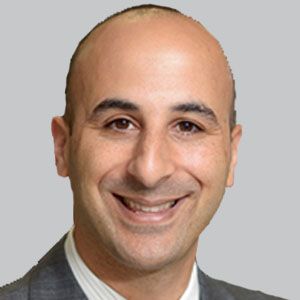Article
Cell Therapy NRTX-1001 Shows Significant Effect on Drug-Resistant Epilepsy in Early Data
Author(s):
NRTX-1001, an injectable suspension of high-purity inhibitory neurons, is currently being assessed in a phase 1/2 trial that includes a dose-escalation period comprising of 10 individuals with mesial temporal lobe epilepsy.
Cory Nicholas, PhD

Findings from the first-in-human study (NCT05135091) of NRTX-1001 (Neurona Therapeutics), a regenerative neural cell therapy derived from human pluripotent stem cells, showed encouraging signs of seizure reduction in 2 patients with drug-resistant focal epilepsy treated with the agent.1
The first of the 2 treated patients had a 9-year history of seizures and in the 6 months prior to the administration of NRTX-1001, the patient experienced an average of 32 seizures a month while be on antiseizure medications. Following a single administration of the agent, no serious or severe adverse events (AEs) have been observed to date, and the patient reported 4 seizures per month during the first 3 months since receiving the drug. The second patient, who began the trial with an average of 14 seizures per month in the 6 months prior to treatment, returned home as planned the day following treatment and, in the first week post-treatment, had not experienced any serious or severe AEs, or seizures.
Cory Nicholas, PhD, president and chief executive officer, Neurona, presented the data from the phase 1/2a study at the recent ISSCR Boston International Symposium. He said in a statement that, "The early clinical results with NRTX-1001 in epilepsy are very encouraging, and we look forward to enrolling additional patients in the study."1
The study is currently powered to enroll 40 participants with drug-resistant unilateral mesial temporal lobe epilepsy in a 2-stage setting. Stage 1 is open-label and unmasked, while stage 2 is masked with participant, part of investigator team, and outcomes assessor masked to treatment assignment. The first and second stage will include up to 10 and 20 participants, respectively, with the final 10 patients included in the stage 2 sham comparator arm. The study features only adults who’ve been on stable doses of approved antiseizure medications for at least 1 month, with seizure frequency averages of at least 2 per 28-day period over the 6 months prior to screening.
In addition to reporting on the 2 dosed patients, Nicholas provided details on the manufacturing and characterization of NRTX-1001. This injectable suspension is made of high-purity inhibitory neurons, called interneurons, that are manufactured in Neurona’s in-house GMP facility with proprietary methods that consistently guide the stem cells into a specific, pallial-type, lineage that secrete the inhibitory neurotransmitter gamma-aminobutyric acid (GABA). NRTX-1001 interneurons are cryopreserved and shipped to clinical sites to be used as an allogenic, off-the-shelf investigative therapy.
"NRTX-1001 is designed to be an off-the-shelf, one-time administration therapy with the potential to durably eliminate seizures and provide a new regenerative cell therapeutic approach in patients for whom anti-seizure medication has failed," Nicholas added. "It has the potential to be disease-modifying without the tissue-destructive procedural risks associated with lobectomy. Further, there are many who are not currently eligible for lobectomy surgery who may be eligible for NRTX-1001 in the future."1
Aside from the newly reported findings, the only previous data on NRTX-1001 came from preclinical models, in which treatment with the cell therapy resulted in seizure-freedom for more than two-thirds of the population compared with 5% of the control group. Additionally, investigators observed signs of reduced mesiotemporal sclerosis, or tissue damage in the affected seizure-onset area of the brain, with treatment from NRTX-1001.2





